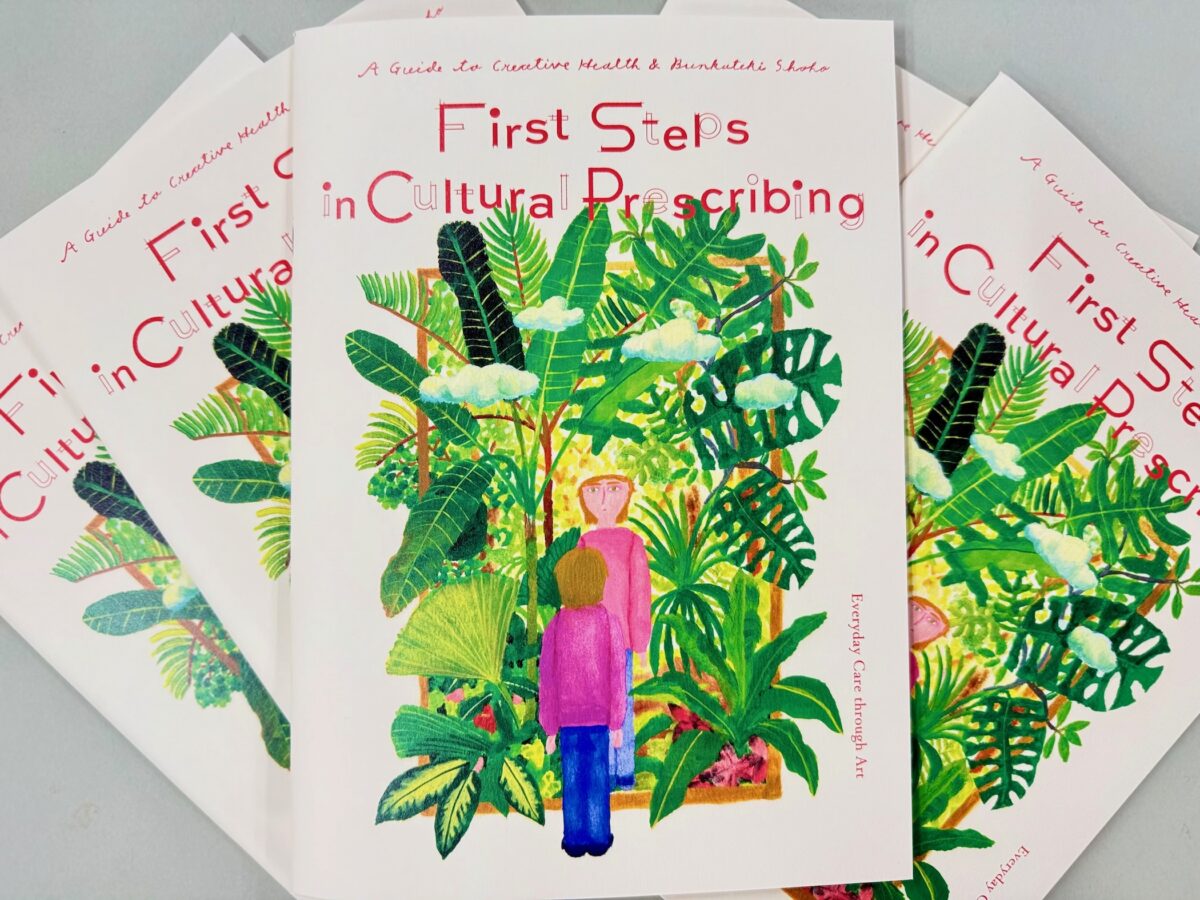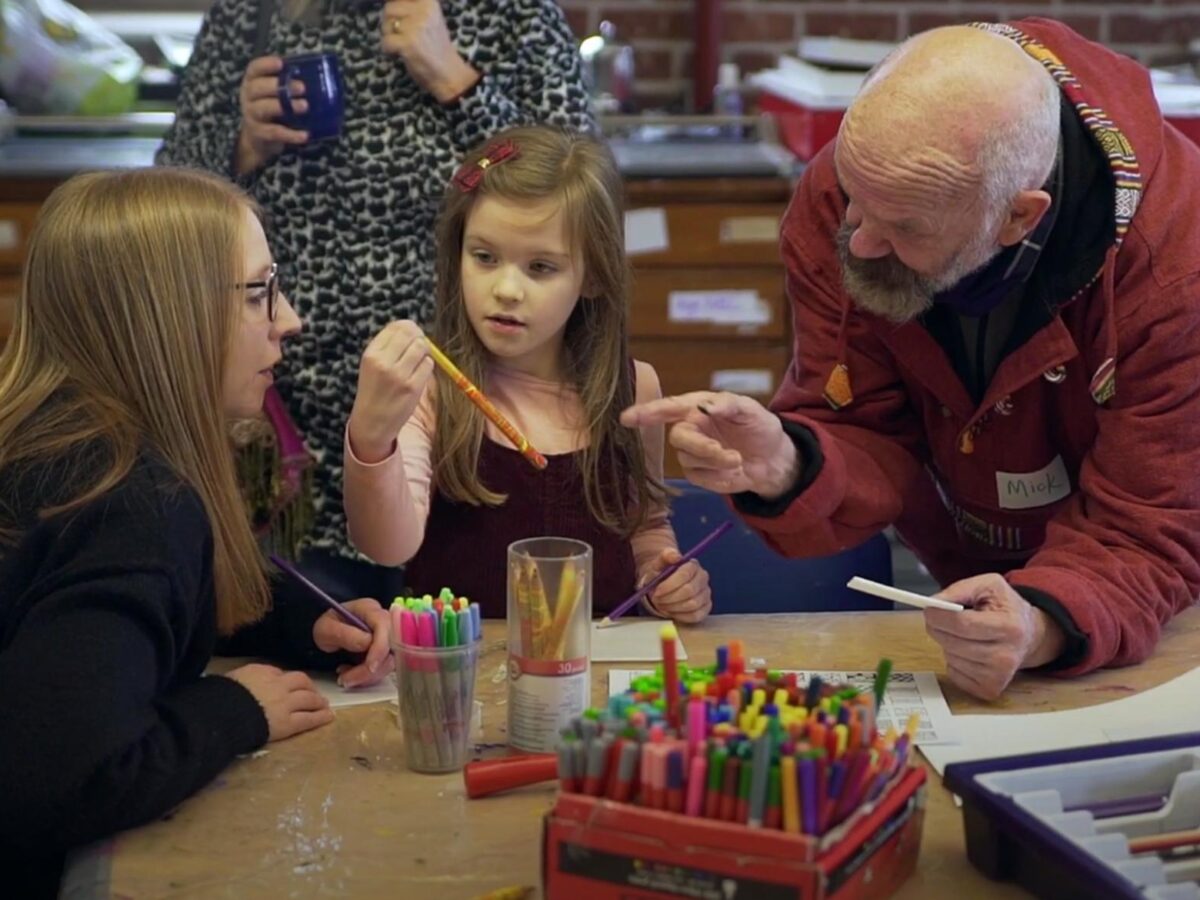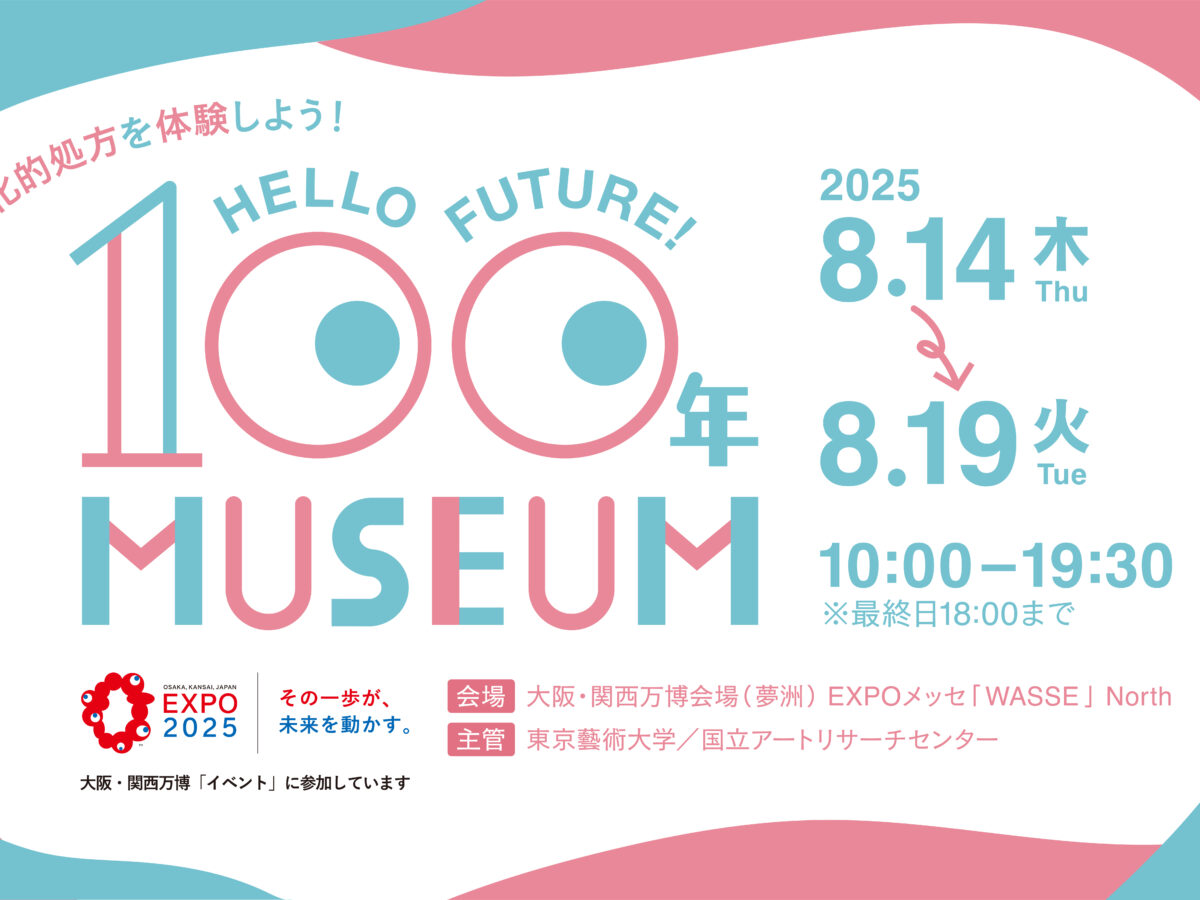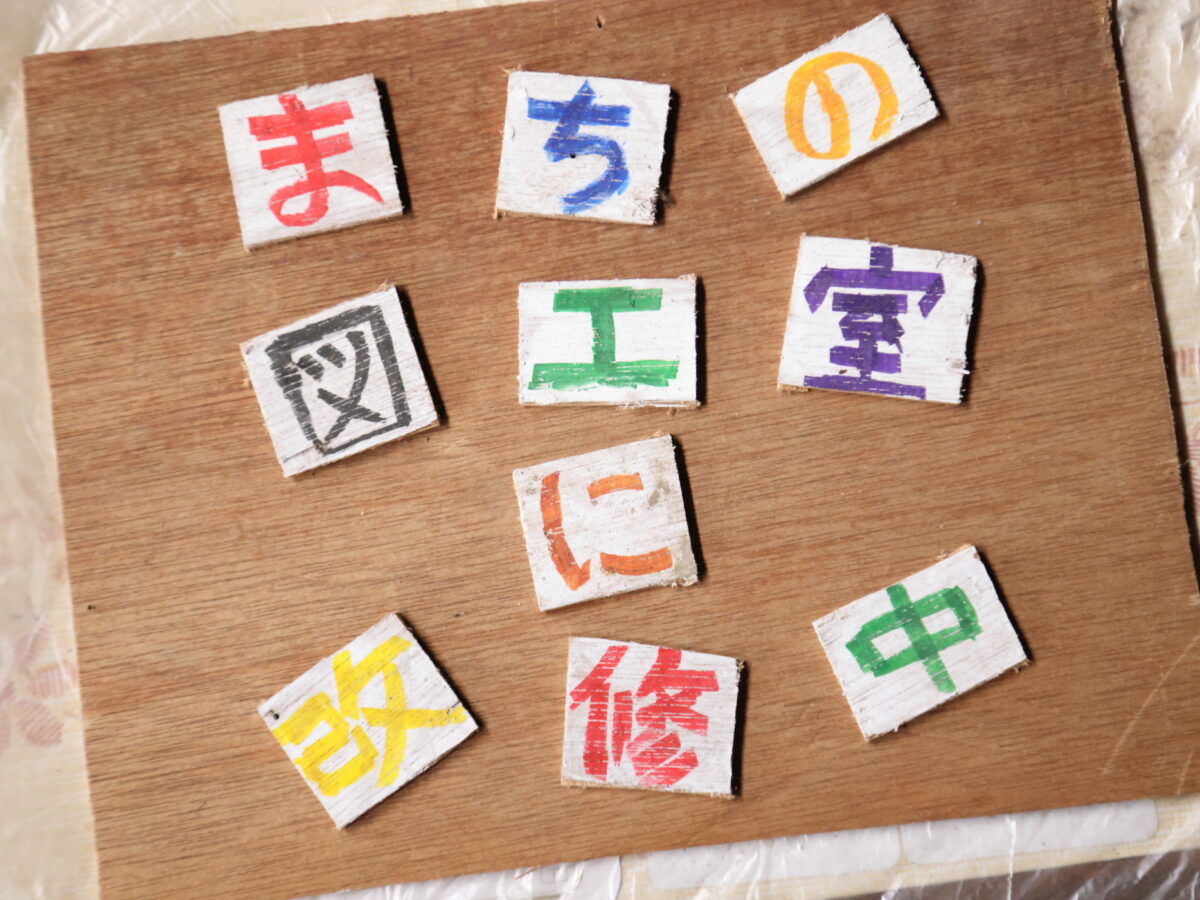 KEYWORD for Cultural Prescribing! "Cultural Prescribing and Social Prescribing" What do they mean?
KEYWORD for Cultural Prescribing! "Cultural Prescribing and Social Prescribing" What do they mean?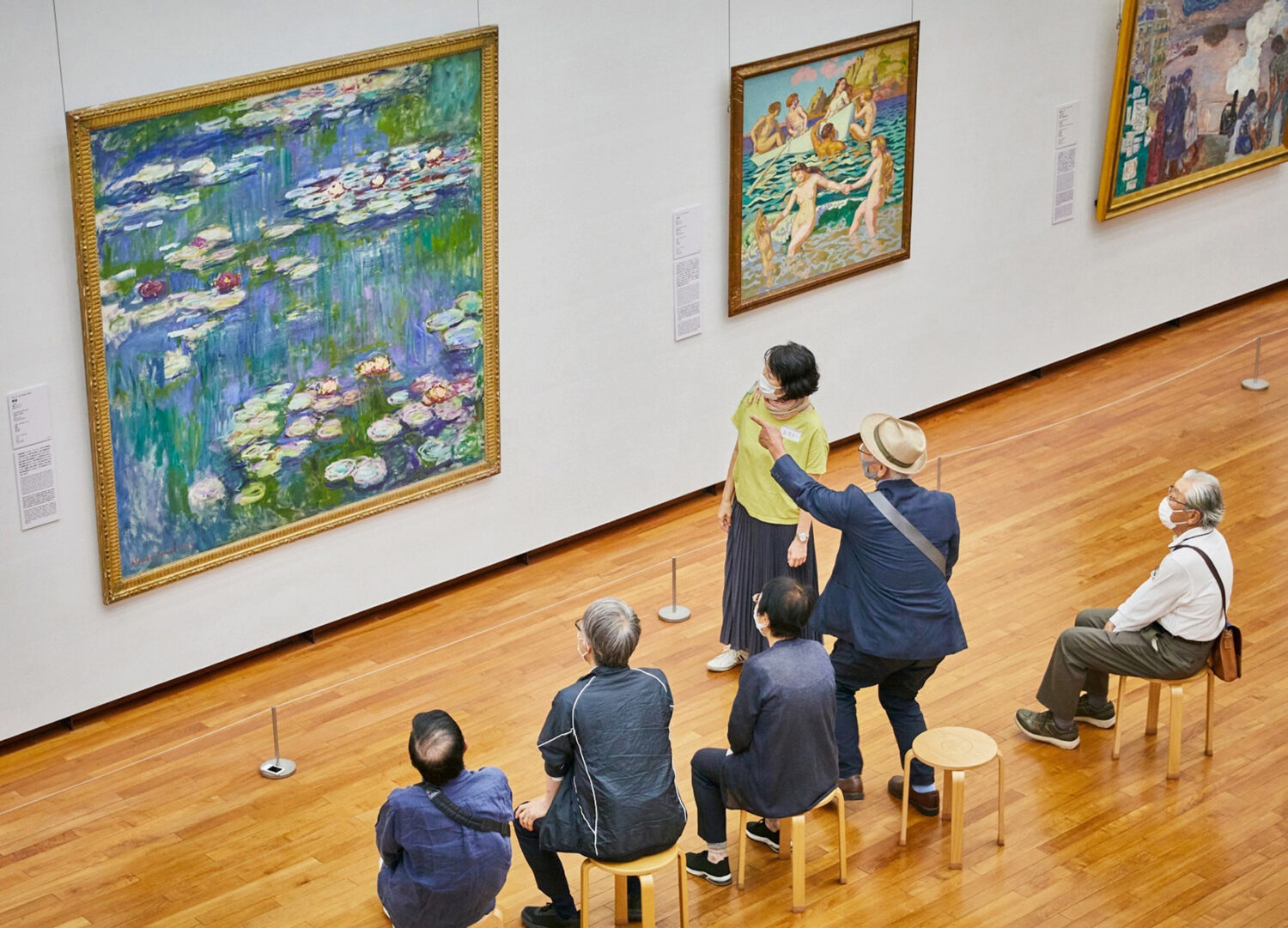
Claude Monet’s Water Lilies, owned by the National Museum of Western Art (Ueno Park, Tokyo, Japan) is one of the most popular Western paintings in Japan. The photo above shows a workshop activity where several people looking at and enjoy Water Lilies by discussing it together. They talk about “what they see right now (objective facts)” and “what they think based on what they see (subjective opinions).” It takes around 15 minutes per artwork. As a facilitator listens to and coordinates the discussion, people feel safe and comfortable to share their thoughts. Generally, the average time spent viewing a single artwork in an exhibition is said to be about 10 to 20 seconds, so 15 minutes is a significantly long time. Yet, when we give it a try, time seems to pass quickly and enjoyably.
By looking at art in this way, we take time to observe what we see visually and are able to accumulate words without talking about its artist or background related to art history. It is similar to the way we observed the growth of morning glory, in elementary school days. We carefully observe a painting like we once observed morning glory. Many might think that “Looking at Art” requires art knowledge. However, we can enjoy paintings without any art knowledge just as we can observe morning glory simply by looking at it and without any knowledge about the plant. In reality, fewer people experience taking time to carefully observe paintings regardless of whether they have any background knowledge or not. Many people just do not get used to taking time to observe paintings, like intensive reading. Nevertheless, it is an enjoyable experience to observe paintings with a group of around five, in situations like the one in the photo above.
In today’s society, there is a tendency to prioritize “time performance” (the efficiency of achieving effects in a short time), so the experience of “Slow Looking” becomes “an thoroughly enjoyable time.” However, this is precisely why the experience is valuable. During this time, participants immerse themselves in the world of the painting and feel as if they are traveling together. Experiencing this method of looking teaches the tricks of “Slow Looking,” allowing one to view paintings at their own pace anytime.
The benefits of “Slow Looking” are not limited to deepening one’s knowledge of paintings. Recent research suggests it may have a positive impact on people’s health. Immersing oneself in the world of the painting, expanding imagination from what is seen, and focusing on the present moment may help enhance our resilience to stress. Art enthusiasts might already feel these benefits. Since the beginning of the 21st century, more research on how art can affect health has been conducted, and art-related activities and cultural policies contributing to people’s health and wellbeing have been implemented in Europe and many other countries. The report issued by World Health Organization (WHO) pointed out that art can assume a new role in lowering the risk of dementia, improving lifestyle-related diseases, and mitigating mental disorders associated with loneliness.
aa-tomo project focuses on art activities that contribute to health and wellbeing, conducting practical activities, research, and reporting in this field. We also aim to introduce related books and materials and share advanced examples with many people.
A guided tour and discussion called “Let’s Talk Art” can be held in an exhibition room anytime during opening hours1 at the National Museum of Modern Art, in Tokyo’s Takeshiba district. This might be the only museum in Japan offering such an experience. Participation is free of charge for admission ticket holders.
- Japanese only. Please check the official site below for the time and date for English guided tour. ↩︎

